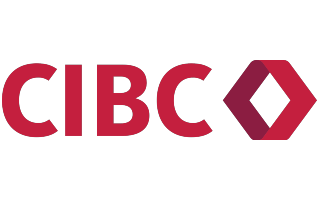The coal industry powers the world. But there are some risks when investing in this plentiful fossil fuel — including the rise of natural gas, government policies and fluctuating demand.
What is coal?
Coal is a rock that’s predominantly made of carbon. Its combustible properties make it useful to burn for fuel and accounts for almost 40% of the world’s electricity generation.
Despite a growing climate change movement and calls for green energy, the coal demand is forecasted to remain stable into 2024. That being said, in 2018 the Government of Canada announced regulations that are intended to phase out traditional coal-fired electricity by 2030.
90% of of the world’s coal supply is produced by 10 countries with China, India and the United States leading the pack. Canada is in 13th place, producing 1% of the world’s coal supply. Canada is the 4th largest coal exporter in the world behind Australia, the US and Russia. Most of the coal produced in Canada comes from Alberta and British Columbia.
Coal stocks are stocks in any companies that mine and process coal for electricity plants and steel production.
Why invest in coal stocks?
China consumed over 50% of the world’s coal production in 2018, according to the BP Statistical Review of World Energy. While the global coal demand should remain stable through 2024, China’s coal demand is predicted to peak in 2025.
High demand for this fossil fuel is likely to bump coal stock prices in the foreseeable future. So although coal won’t be the dominant energy source that it once was during the Industrial Revolution, the industry is hardly disappearing.
Risks of investing in coal
Coal stocks face 3 primary obstacles:
- Government policies. When coal is burned for energy, it produces greenhouse gas emissions. Governments are adopting stronger climate policies to reduce air pollution by slowly phasing out coal power generation. For example, the Canadian government is implementing regulations to phase out coal-fired electricity by 2030.
- Competition. Renewable energy, including wind, solar power and natural gas, are slowly edging coal out of the market. For example, coal generation is forecasted to drop by more than 5% every year through 2024 in Europe and the United States.
- Developments in China. Being a coal consumer giant, China strongly influences coal demand. China anticipates consumption to peak in 2025, while the International Energy Agency thinks demand could plateau as soon as 2022. Either way, coal demand will steadily fall as China weans off of coal and implements its cleaner energy strategy.
Coal stocks
Many coal stocks trade on the New York Stock Exchange, and some trade on the TSX. But certain stocks, including China Shenhua Energy Co. Ltd., are only available over-the-counter (OTC Markets, Pink Sheets) or from an international exchange.
- TransAlta Renewables Inc. (TSX: TA)
- Teck Resources Limited (TSX: TECK-B)
- Corsa Coal Corp. (TSXV: CSO)
- Anglo Pacific Group plc (TSX: APY)
- Westshore Terminals Investment Corporation (TSX: WTE)
- Morien Resources Corp. (TSXV: MOX)
- Canadian Pacific Railway Limited (TSX/NYSE: CP)
- NACCO Industries, Inc. (NYSE: NC)
- Peabody Energy Corporation (NYSE: BTU)
- CONSOL Energy Inc. (NYSE: CEIX)
- Alpha Metallurgical Resources, Inc. (NYSE: AMR)
- POSCO (NYSE: PKX)
- China Shenhua Energy Company Limited (OTC Markets, Pink Sheets: CSUAY)
- Yanzhou Coal Mining Company Limited (OTC Markets, Pink Sheets: YZCAY)
- China Coal Energy Company Limited (OTC Markets, Pink Sheets: CCOZF)
What ETFs track the coal category?
One exchange-traded fund in the coal industry is the VanEck Vectors Coal ETF (NYSEARCA: KOL). This ETF tracks the overall performance of companies involved in coal operations.
Compare trading platforms
You’ll need a brokerage account to purchase coal stocks. Take a look at a few popular brokers to find one that fits your investing goals.
Finder Score for stock trading platforms
To make comparing even easier we came up with the Finder Score. Trading costs, account fees and features across 10+ stock trading platforms and apps are all weighted and scaled to produce a score out of 10. The higher the score the better the platform - simple.
Bottom line
To invest in coal, compare trading platforms to open a brokerage account.
Frequently asked questions
More on investing

What are the best stocks for beginners with little money to invest?
Want to dive into investing but don’t have much to spend? Take a look at these types of stocks.
Read more…
Meme stocks: What they are and examples of popular stocks
Meme stocks can produce large gains in short periods, but the stocks are volatile.
Read more…
How do ETFs work?
Your guide to how ETFs work and whether this type of investment is right for you.
Read more…More guides on Finder
-
Full guide to paper trading accounts for 2025
How to choose the best paper trading platform to help you learn the ins and outs of investing.
-
How will tariffs affect the stock market?
Find out how the Trump tariffs will impact the stock market and explore Canadian stocks that may be resilient amidst tariffs.
-
What are the best stocks for beginners with little money to invest?
Want to dive into investing but don’t have much to spend? Take a look at these types of stocks.
-
Trading promos & investment account bonuses for 2025
Enjoy perks like free trades and cash back when you open a stock trading account with these online broker promotions.
-
TD Easy Trade review
Use this self-directed trading app to learn the basics of investing with a streamlined app and a number of free trades annually.
-
Best renewable energy stocks
These are the best renewable energy stocks to buy now in Canada.
-
10 best trading platforms and apps in Canada for 2025
Whether you’re a new or experienced investor, these are the best stock trading platforms and apps in Canada.
-
TD Direct Investing Review
Make quick and easy trades using this reputable online trading platform from TD.
-
RBC Direct Investing review
Here’s what you need to know about the benefits and shortcomings of this Big Bank investment platform.
-
Questrade review
Questrade is a leader among Canadian discount brokerages, but is it right for you? Compare fees, features and alternatives here.




